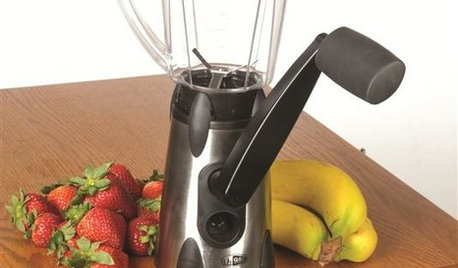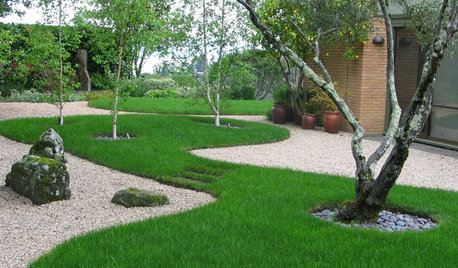Kadota cutting issues
kate013
14 years ago
Related Stories

COLORColor Commitment Issues? Just Throw In a Pillow
You don't need to go big or permanent to go bold with color in your rooms; you only need to master the easy art of the toss
Full Story
DECORATING GUIDESInlay Makes Rooms a Cut Above
Furniture and accessories inlaid with shells, faux bone or pearl give rooms an elevated artistic sense and showstopping style
Full Story
HOME OFFICESQuiet, Please! How to Cut Noise Pollution at Home
Leaf blowers, trucks or noisy neighbors driving you berserk? These sound-reduction strategies can help you hush things up
Full Story
KITCHEN DESIGNKitchen Counters: Try an Integrated Cutting Board for Easy Food Prep
Keep knife marks in their place and make dicing and slicing more convenient with an integrated butcher block or cutting board
Full Story
BASEMENTSBasement of the Week: Smart Cost Cutting, Beautiful Results
A stylish multipurpose basement for less than half the usual cost? See the budget-saving tricks that helped this underground space
Full Story
GARDENING GUIDES7 Ecofriendly Gardening Ideas That Also Cut Chore Time
Spend less time weeding, less money watering and more moments just sitting back and enjoying your healthy garden
Full Story
ACCESSORIESEasy Green: Cut Electricity Use With 15 Unplugged Home Devices
Crank up the energy savings, courtesy of household items that come into power the old-fashioned way: manually
Full Story
LANDSCAPE DESIGNIs Your Garden Cut Out for Matisse Inspiration?
Look to the artist’s paper collages for a creative and easy approach to garden design
Full Story
HOLIDAYSHow to Care for Your Christmas Tree
Keep your tree looking lush until the last ornament is packed away with these tips for watering, using stands and more
Full Story
LIFEHouzz Call: Show Us Your Nutty Home Fixes
If you've masterminded a solution — silly or ingenious — to a home issue, we want to know
Full StorySponsored
More Discussions






satellitehead
paully22
Related Professionals
Arnold Landscape Architects & Landscape Designers · Ilchester Landscape Architects & Landscape Designers · Oconomowoc Landscape Architects & Landscape Designers · East Patchogue Landscape Contractors · Lemoore Landscape Contractors · Plantation Landscape Contractors · Porterville Landscape Contractors · Southbury Landscape Contractors · Palos Heights Landscape Contractors · Arbutus Decks, Patios & Outdoor Enclosures · Portage Decks, Patios & Outdoor Enclosures · Arroyo Grande Fence Contractors · Germantown Fence Contractors · Plainfield Fence Contractors · Westmont Fence Contractorsdanab_z9_la
ejp3
maklaakie
ejp3
satellitehead
satellitehead
danab_z9_la
satellitehead
ricortes
danab_z9_la
satellitehead
danab_z9_la
xgrndpounder
danab_z9_la
xgrndpounder
danab_z9_la
xgrndpounder
ricortes
danab_z9_la
danab_z9_la
cro_smokva